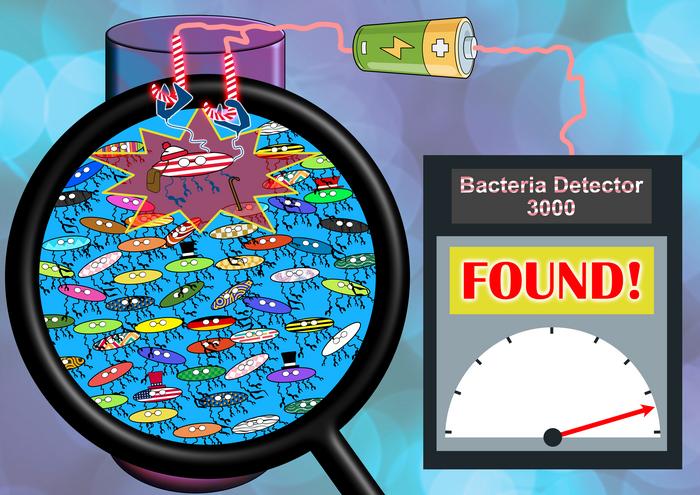Emerging Evidence: Low-Level Air Pollution Associated with Liver Damage and Fatty Liver Disease
Long-term exposure to low-level traffic-related air pollution has recently been linked to detrimental effects on liver health, as highlighted by a compelling study conducted on mice. This research probes into the depths of how environmental factors can have far-reaching consequences on various bodily functions, particularly the liver. The lead author, Professor Hui Chen from the […]


Long-term exposure to low-level traffic-related air pollution has recently been linked to detrimental effects on liver health, as highlighted by a compelling study conducted on mice. This research probes into the depths of how environmental factors can have far-reaching consequences on various bodily functions, particularly the liver. The lead author, Professor Hui Chen from the University of Technology Sydney, emphasizes that while air pollution has typically been associated with respiratory issues, it extends its malign influence to other critical organs, including the liver.
Liver disease, specifically metabolic-associated fatty liver disease, is currently recognized as one of the most prevalent liver conditions globally. The phenomenon of hepatic steatosis occurs when excess fat accumulates in liver cells, potentially leading to a host of further complications such as inflammation, fibrosis or scarring, and even increased susceptibility to liver cancer. The significance of liver health cannot be understated, as this organ plays a vital role in numerous metabolic processes, including toxin clearance, blood sugar regulation, and vitamin production. A malfunctioning liver can have widespread consequences, leaving individuals fatigued and unwell.
Professor Chen sheds light on the complex interplay between inhaled pollutants and liver function. Fine particulate matter known as PM2.5, which can penetrate deep into the lungs and subsequently enter the bloodstream, poses a serious threat. Once these toxic particles reach the liver—a key filter of blood toxins—they can lead to unwanted substance accumulation, including hazardous heavy metals such as arsenic, lead, nickel, and zinc. Furthermore, this chronic exposure exacerbates inflammation and can initiate immune responses detrimental to liver health.
This groundbreaking study included contributions from renowned liver disease expert Professor Jacob George, whose involvement underscores the seriousness of the findings. In Australia alone, approximately one in three adults is diagnosed with some form of fatty liver disease. Susceptibility to this condition is particularly elevated among those who are overweight or diabetic, conditions deeply intertwined with lifestyle choices. However, this new research introduces an environmental variable, suggesting that exposure to traffic-derived air pollution may compound the risk factors associated with fatty liver disease.
Conducting their investigations with a stringent experimental setup, researchers administered a daily dose of 10 micrograms of traffic-derived PM2.5 particles to mice. This quantity is emblematic of typical human exposure in urban settings like Sydney, with the samples collected from a prominent roadway. The study meticulously measured the physiological ramifications over varying time intervals—four, eight, and twelve weeks—allowing the researchers to observe cumulative effects on liver health.
Initial observations at four weeks were relatively benign; however, as time progressed, a marked disruption in liver metabolism became apparent by the eight-week mark. By the twelve-week duration, researchers noted significant changes, revealing just how detrimental prolonged exposure to even low levels of air pollution can be. The data indicated a concerning uptick in immune cell gathering within the liver and escalating inflammation, which invariably fosters the creation of scar tissue.
Diving deeper into metabolic implications, researchers were quick to identify an alarming increase in fat processing within the liver, along with the accumulation of lipid molecules, namely triglycerides, diacylglycerols, and ceramides. These changes were compounded by a simultaneous decrease in the liver’s capacity to store sugars for energy, further complicating metabolic processes. In total, the research uncovered alterations in 64 distinct functional proteins within the liver, many of which are intimately connected to fatty liver disease, immune system dysfunction, and oncogenic processes.
Prior studies have established a correlation between heavily polluted air and liver disorders; however, this particular study takes the hypothesis a step further. It indicates that even low-level exposure is potentially hazardous, suggesting the absence of a “safe” threshold regarding traffic-derived air pollution. This alarming conclusion ignites a discussion regarding urban living conditions and public health, urging individuals and policymakers alike to reassess their environments and the potential repercussions they have on health.
To mitigate exposure to traffic-related air pollution, Professor Chen suggests several practical strategies. Citizens are encouraged to sidestep peak traffic hours, select less congested routes for walking or cycling, utilize protective masks, and maintain closed car windows with air recirculation on when navigating in heavy traffic. Such measures may not only safeguard individuals from immediate discomfort but also work towards preserving long-term liver health.
In sum, the nexus between air pollution and liver health as elucidated by this research represents a critical intersection of environmental science, public health, and metabolic disorders. The findings serve as a clarion call, urging society to acknowledge the oft-overlooked impacts of air quality on vital organ health. As urban areas continue to expand and pollution becomes an almost inescapable reality, it is vital to embrace the ethos of “clean air for all”. This study not only advances our understanding of environmental toxins but also highlights the urgent necessity for broader frameworks in public health and city planning aimed at preserving the health and well-being of the population.
As these discussions unfold, the hope remains that further studies will elucidate the myriad ways in which our surroundings affect our health, fostering a world where the air we breathe does not come with hidden dangers that could compromise our most essential bodily functions.
Subject of Research: Animals
Article Title: Prolonged exposure to low-dose traffic-derived PM2.5 causes fatty liver disorder in mice
News Publication Date: 27-Jan-2025
Web References: Journal of Environmental Sciences
References: DOI
Image Credits: Not provided
Keywords: Fatty liver disease, air pollution, metabolism, liver health, inflammation, cancer risk, environmental health.
Tags: air pollution and organ healthenvironmental impact on liver functionhepatic steatosis causesinflammation and liver complicationsliver disease global prevalenceliver health and air qualitylong-term exposure to air pollutantslow-level air pollution effectsmetabolic-associated fatty liver diseasePM2.5 and liver damageProfessor Hui Chen research findingstraffic-related air pollution study
What's Your Reaction?

































